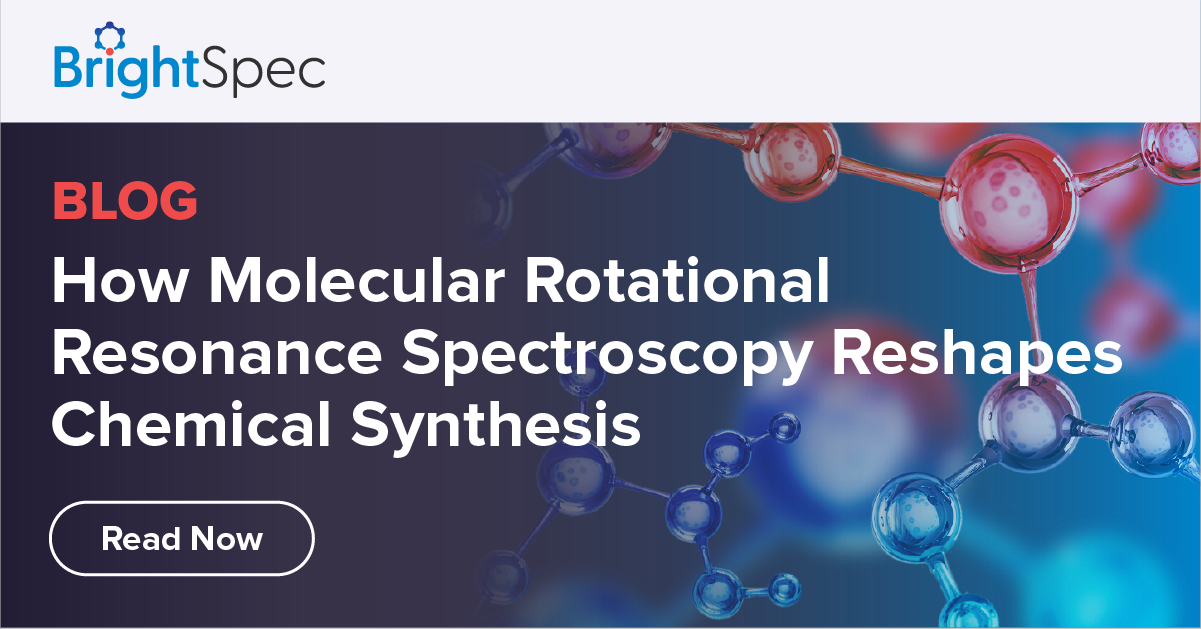How Molecular Rotational Resonance Spectroscopy Reshapes Chemical Synthesis

Introduction: In the ever-evolving realm of chemical synthesis, staying ahead of the curve demands innovative technologies that offer precision, speed, and automation. Molecular Rotational Resonance (MRR) Spectroscopy emerges as a groundbreaking technique poised to revolutionize how we monitor and control chemical reactions in real time. MRR is a useful analytical tool that provides the most insightful technique available for the structural determination of gas-phase molecules. Let's delve deeper into how this pioneering approach is reshaping the landscape of process analytical technology (PAT) and propelling us into a new era of chemical synthesis.
The Problem: Traditional methods of online reaction monitoring, ranging from Mass Spectrometry (MS) which is useful for measuring the mass-to-charge ratio (m/z) of one or more molecules present in a sample to Nuclear Magnetic Resonance (NMR) which is useful for recording the interaction of radio frequency (Rf) electromagnetic radiations with the nuclei of molecules placed in a strong magnetic field, have long grappled with inherent limitations in resolution, sensitivity, and automation. These constraints hindered our ability to achieve granular insights into reaction kinetics, selectivity, and product quality but also delayed process development and impeded manufacturing efficiency.
Why It is Crucial: In today's hyper-competitive industries, efficiency is paramount. Nowhere is this more evident than in pharmaceutical manufacturing, where precision, reliability, and agility are non-negotiable. By empowering real-time monitoring and control of chemical reactions, MRR spectroscopy is key to unlocking accelerated process development, streamlined manufacturing, and enhanced product integrity—all while reducing manual intervention and safety risks.
Innovative Solutions: The game-changing study showcased the seamless integration of MRR spectroscopy with an automated reaction monitoring interface. This groundbreaking system enables direct identification and quantification of individual components within reaction mixtures, without cumbersome chromatographic separations. Leveraging MRR's unmatched ability to resolve isomeric compounds and isotopic variants, the platform delivers real-time insights into reaction kinetics, completion, and selectivity with unprecedented precision and efficiency. You can enhance efficiency in your lab by saving time, cutting costs, and streamlining your analysis.
Charting the Course Forward: The future of chemical reaction monitoring is brighter than ever. With ongoing advancements in MRR-based systems, we are on the cusp of a paradigm shift in how we approach chemical synthesis. By expanding compatibility with a range of solvents and reaction classes, these cutting-edge platforms are poised to revolutionize industries beyond pharmaceuticals, driving innovation and optimization collectively.
Conclusion: As we stand on the precipice of a new era in chemical synthesis, it is time to embrace the transformative potential of Molecular Rotational Resonance Spectroscopy. Whether you are a researcher pushing the boundaries of chemical science or a pharmaceutical manufacturer striving for excellence, consider integrating MRR spectroscopy into your workflow to unlock unparalleled insights, efficiency, and quality. Together, let us embark on this exhilarating journey into the future of chemical synthesis.
Download our webinar, Introduction to MRR Principles and Instrumentation below to learn more.
